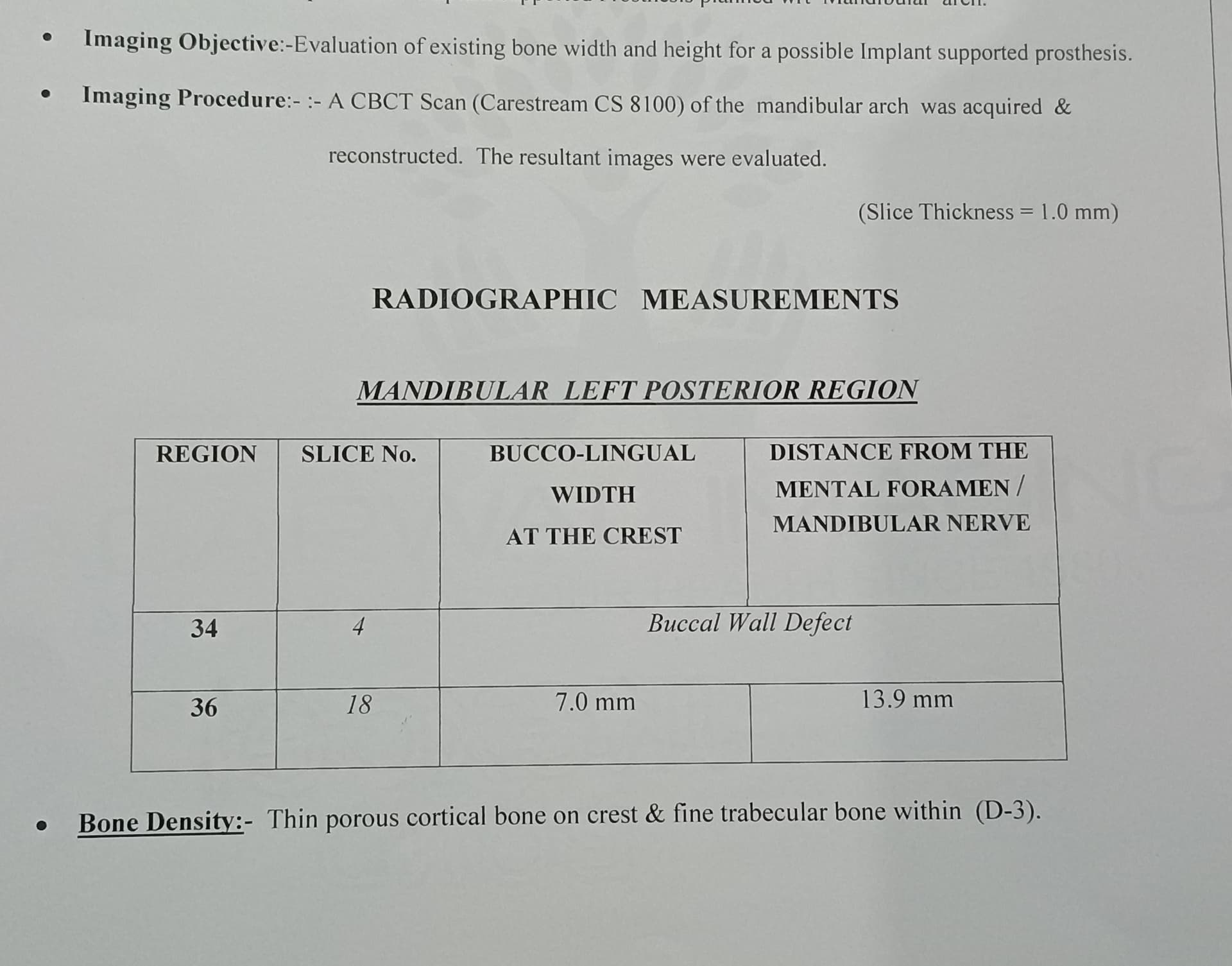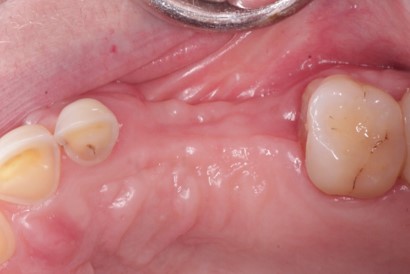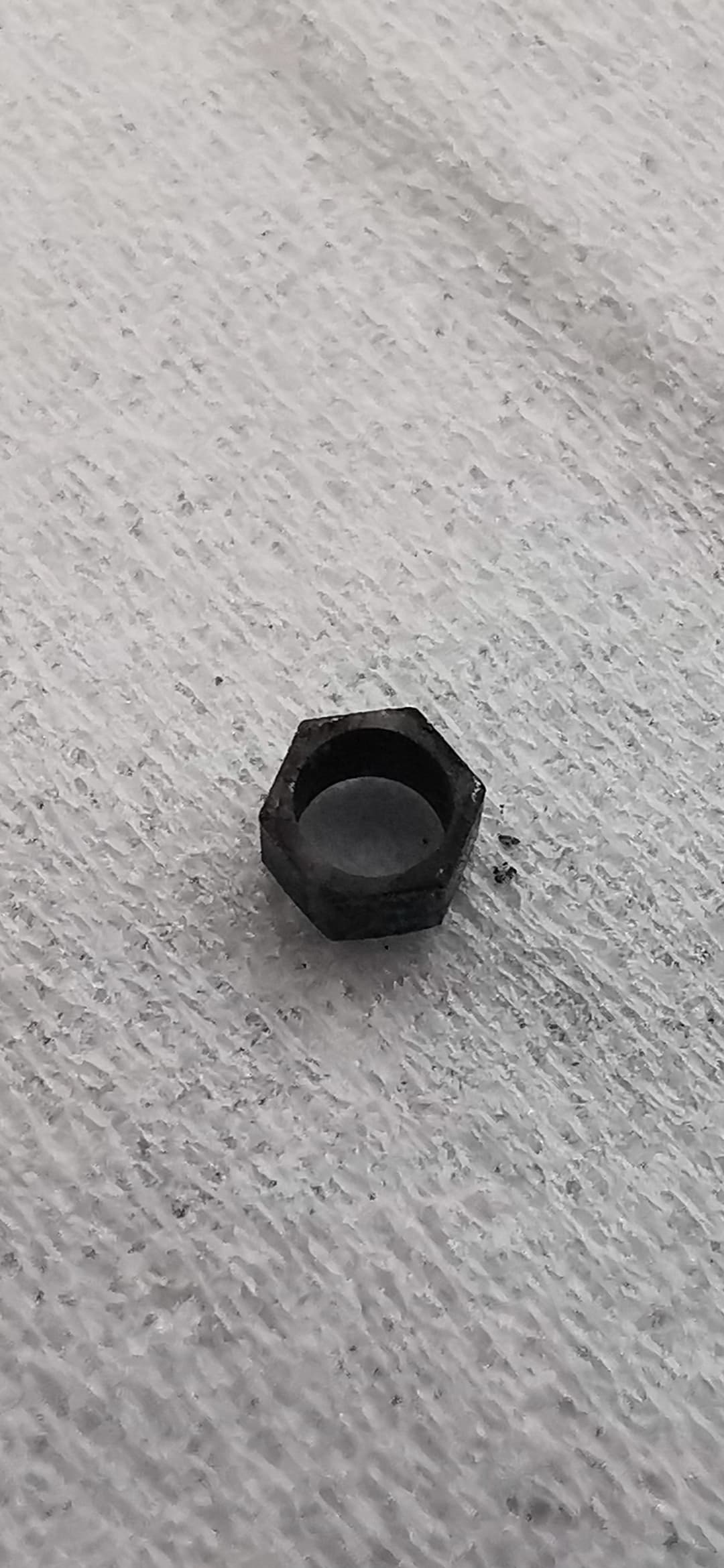Dealing with Deep Implant?
This patient has dislodged the crown from the implant in 13 site. Note that the implant and abutment are quite deep. What is the best technique for me to prosthetically restore this implant?

15 Comments on Dealing with Deep Implant?
New comments are currently closed for this post.
Steve Cisternas
6/21/2017
I would due a screw retained crown. No way to clean cement off after placement.
John H.
6/21/2017
A film with the crown in place would allow you to evaluate its contours relative to the tissue.
Assuming this is a cement retained crown, I'd be concerned about both impinging on the hard and soft tissue and introducing excess cement into the area.
The ideal (in my opinion) would be to re-impression at the implant level. Have the lab fabricate an abutment and crown that provide for passive crown contours and a safe (more coronal) cement margin (if a cemented case). Screw retained would eliminate concern over the latter.
Geoff
6/21/2017
I would probe the sulcus/pocket and see what kind of depth you have with light probing. With the crown off, it will be a pretty accurate reading. If it is not too deep, and appears that the that most coronal circumferential indentation is near the base of the sulcus/pocket, then you may have a compromise situation, but a good compromise situation as the bone may have enveloped the abutment such that it has created soft tissue attachment to the abutment. That being the case, I would inform the patient that this is a compromise situation but that there is some chance that just placing a crown (screw retained would be more ideal if possible) might actually serve well. However, caution this is not the usual ideal position and there could be a problem later which required implant removal. Just advise that to remove the implant and start over now, which is the ideal, would be costly and time consuming and leave the decision to the patient as to whether they are willing to try to make the compromise work. And gte the informed consent in writing and agreement that they will return to you for follow up every 3 months for a year and at least annually after that if no problems in the first year.
CRS
6/21/2017
Well at least it is platform switched😊How can you get an impression that deep would love to see a CBCT to see if there is any buccal plate.
kwan
6/21/2017
if implant is sound and solid, just design your abutment such that abutment margin is a little below the gum tissue on buccal side for esthetic reason. If no esthetic is concerned, then supra abutment margin. Then you won't have to mess up with cleaning cement.
Or......screw retain crown if path is allowing.
But overall prognosis is good.
Fereydoon
6/21/2017
It is a temporary abutment,it causes bleeding during impression.
change it with a very long healing abutment.
I prefer cemented crown .in case of mismatch or screw loosening there will be a problem at implant level in screw retained crown.
Steven cisternas
6/21/2017
If the screw loosens just gain access and tighten i on a screw retained crown. I cannot see a retreivable cement holding the crown on therefore a permanent cement will be needed and if the abutment screw loosens then you have more to deal with accessing it.
Sheetal Saklecha
6/21/2017
In this case ,I would try and obtain a good impression and have a custom cad cam abutment milled and then plan a screw retained crown . That way I have good control over my emergence as well as crown margin.
All the best
Kevin Frawley DDS
6/22/2017
I agree with previous comments. I would either screw retain the crown or fabricate a new custom abutment with supragingival margins and a cementable crown. Reverse"s" contour is critical with deep implant placement. I would not be surorised if you find some cement present upon crown removal, that caused current bone loss.
Manjunath Sati
6/22/2017
you can custamise abutment (castable abutment) and fix it with screw and u cement the crown over that using a temp cement.This way you will have screw retained abutment and cemented crown.This way you can have the dual advatage.
Dr Bob
6/22/2017
Stock titanium abutment with the crown margin as close to the gingival margin as it can be. (long abutment) The titanium abutment will be kinder to the soft tissue sub gingival that a cast non titanium abutment. Fabricate the crown with a screw access hole that lines up with the abutment access hole. The crown can be cemented to the abutment outside of the mouth and then the abutment and cemented crown can be screwed into place onto the implant with no cement concern. A platform switch could be a benefit also.
Dr. TK
6/22/2017
I like Dr. Bob's idea best. My questions:
How long has the implant been in place? If this is a five year old case with healthy tissue then most of us would consider this a less than ideal, yet ultimately successful restoration and we would be less concerned about potential problems.
Do you still have the crown? The patient dislodged the crown, but what happened then? was it lost, broken?
In my office I screw retain crowns whenever possible. If this patient presented to my office on an emergency basis with crown in hand, my preference would have been to remove the abutment, drill a screw access hole through the existing crown, cement the crown to the abutment extraorally, and then deliver it as a screw retained crown. With extraoral cementation you get the strongest possible connection with the ability to polish the margin and no risk of residual cement in the threads. For me, this would have been one quick low stress appointment with no anesthesia and a happy patient.
Andy K
6/22/2017
Try to call the implant company, if they have longer post, that maybe another solution.
Change to longer post, temporize for 1-2 week.
Final impression after soft tissue heals.
Cement retained crown at the end.
I regularly buried my implant placement & use cemented crown.
This case is little too deep, but it's restoreable.
Geoff
6/22/2017
Please consider that the abutment may actually have soft tissue attachment judging from the radiograph. That's why I suggest probing lightly first. That soft tissue attachment, if present is the "gold" in this scenario. It might happen again with the right shaped abutment...or it might not. I would suggest not removing this abutment if you have enough abutment showing to make an impression. Put some parallel grooves in it to help with retention and then, when cementing a crown with gingival level or supragingival margins except on facial (or there too if the patient agrees) and use Dr. Gordon Christianson's "pocking of the surface of the crown and abutment with 1/2 round bur to create roughness for retention. Then cement the crown with a permanent cement if it still has retention issues. Make a record of where in the crown that you would have to drill to remove the screw through the crown in the future ("on a line drawn between the the distal incisal edge of #7 and facial cusp tip of #5 and 4 mm distl to #7 with the drill shank tipped...." or just a recording of where on the crown to drill). Now if you need to retrieve the crown/abutment later you will know where to drill to do that later.
Oleg Amayev
7/3/2017
Are you people kidding? This implant must be removed, this is not restorative implant. You can screw anything in a mouth but it doesn't mean it suppose to be in there.
This must be removed, area must be grafted, and 4-5months later Ct scan taken, preferably surgical guide created( optional) but good idea to have it, and new implant must be placed.
This implant placed about 8mm below the crest, that will create deep pocket, constant inflammation, crown dislodging, and very possible bone loss around adjacent teeth.


















